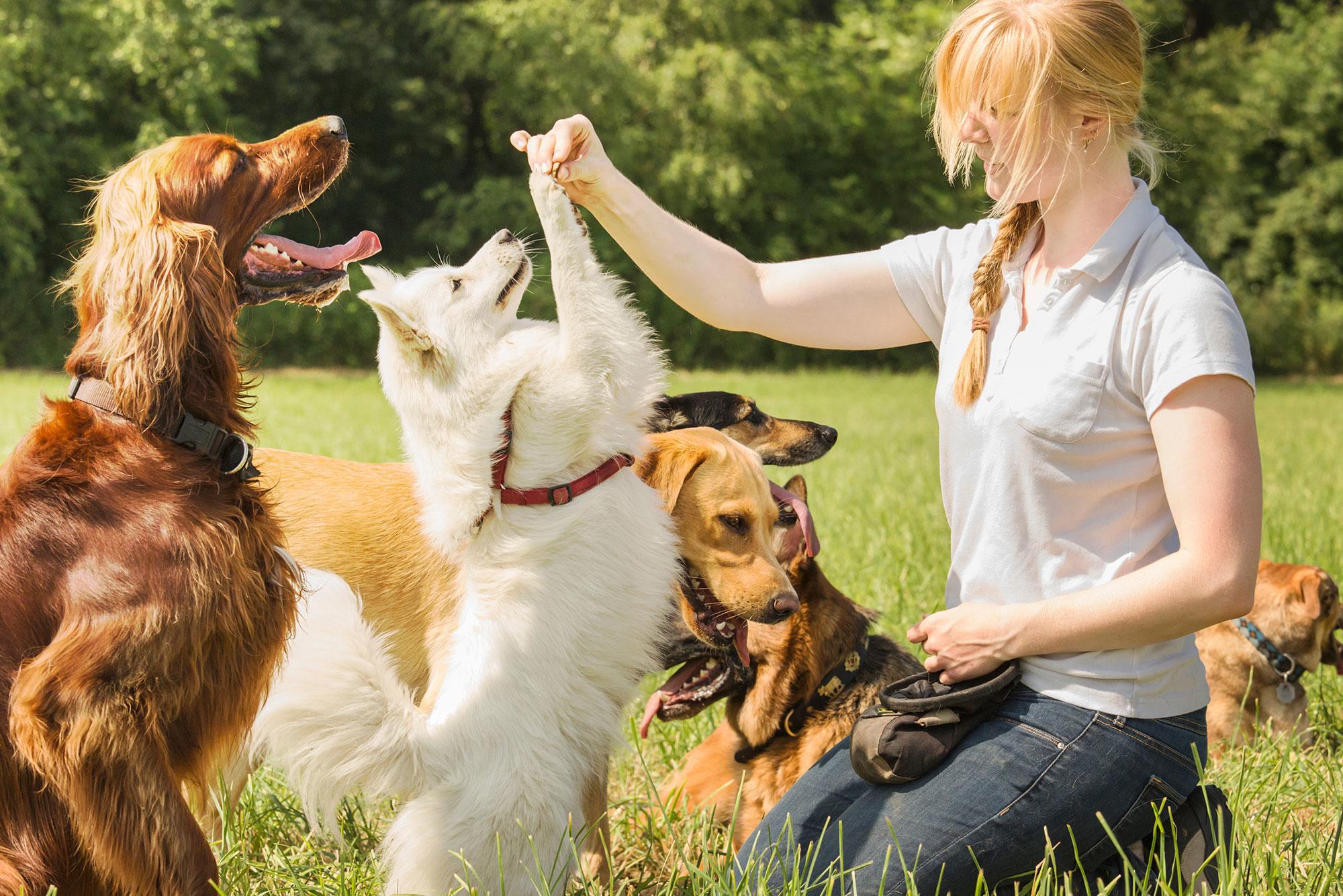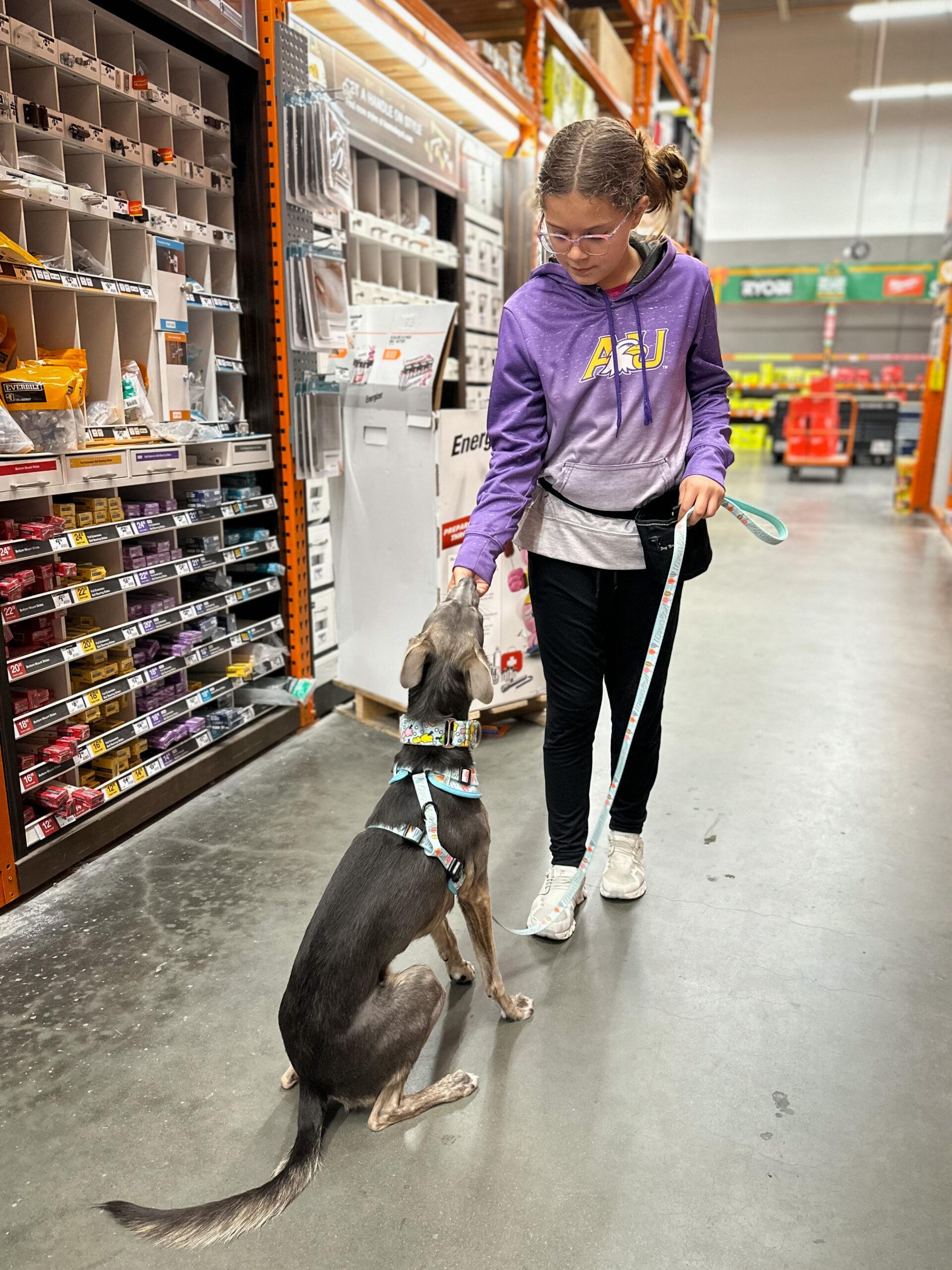Enjoyable Activities to Enhance Your Dog Training Experience
Enjoyable Activities to Enhance Your Dog Training Experience
Blog Article
Vital Tips for Successful Dog Training: A Guide for Pet Owners
Effective canine training is a multifaceted procedure that needs a critical technique customized to both the animal's personality and the owner's goals. Comprehending how to navigate these obstacles can substantially enhance the training experience, eventually changing the relationship in between owner and pet.
Comprehending Dog Habits
Understanding pet behavior is essential for effective training and fostering a harmonious relationship between pooches and their proprietors. dog training. Dogs connect largely through body language, vocalizations, and actions, making it critical for owners to analyze these signals properly.

Socializing plays a substantial duty in dog habits; direct exposure to numerous atmospheres, people, and various other pets can significantly influence a canine's temperament. Additionally, aspects such as type qualities and private temperament must direct training methods, as some types might have particular behavioral qualities that necessitate tailored strategies. By understanding these aspects, owners can create an encouraging atmosphere that motivates positive habits, resulting in successful training results and a deeper bond with their pet dogs.
Establishing Constant Commands
Effective interaction with your pet dog begins with establishing consistent commands. This foundational element of training is critical for promoting understanding in between you and your animal. Consistency in the commands you make use of makes certain that your canine can accurately associate details words or phrases with the preferred behaviors.
When choosing commands, choose clear, unique words that are very easy to set apart and state from each other. Avoid using similar-sounding commands that may puzzle your dog. Using "rest" and "stay" is appropriate, yet "rest" and "hit" can lead to misunderstandings.
In addition, preserve the same tone and volume for each and every command. Dogs are sensitive to vocal cues, so varying your tone can create complication.
It is similarly important to make sure that all member of the family get on the very same web page regarding the commands made use of. A united front in command usage will stop blended signals and enhance the learning procedure.
Favorable Reinforcement Strategies
The power of positive support in canine training depends on its ability to urge preferred behaviors through incentives and appreciation. This method is based in the concept that actions followed by positive results are most likely to be duplicated. By incorporating favorable reinforcement right into your training regimen, you can successfully form your canine's actions in a constructive way.
To apply favorable reinforcement, it's necessary to recognize what encourages your dog, whether it be deals with, toys, or verbal appreciation. When your pet does a preferred activity, such as remaining on command, immediately award them with a treat or love. This association between the command and the positive outcome enhances their understanding.
It's essential to timing the incentives appropriately; delivering the support within seconds of the wanted habits aids your pet make the link (dog training). Additionally, uniformity is essential-- ensure that all family participants utilize the very same commands and benefit systems to prevent complication

Gradually, you can decrease the frequency of deals with as your he has a good point dog learns the actions, transitioning to applaud or intermittent incentives. This approach not only promotes a strong bond in between you and your pet dog but also promotes a positive understanding environment, making training a delightful experience for both.
Socialization and Interaction
Constantly exposing your pet dog to a selection of atmospheres, individuals, and other pets is essential for their social growth. Socializing should start early, ideally throughout the crucial home window of 3 to 14 weeks, when pups are most receptive to new experiences. Nonetheless, older pets can likewise take advantage of ongoing socializing initiatives.
Introduce your canine to different setups, such as parks, pet-friendly stores, and urban locations. This direct exposure aids them adjust to different stimuli, decreasing anxiousness and concern responses. Motivate favorable communications with various other dogs and people, ensuring that the original source these experiences are secure and controlled to promote confidence.
Use structured playdates with genteel canines, as this can improve your pet dog's social abilities and educate them appropriate actions. Obedience classes and training sessions also offer superb possibilities for socializing, enabling your pet dog to engage with others in a supervised setting.
Display your canine's body movement during communications, as this will certainly help you gauge their convenience level. Slowly enhance exposure to even more challenging circumstances while ensuring that each experience declares. A well-socialized pet is most likely to show balanced behavior, making them a pleasure to have in any kind of setting.
Addressing Usual Training Obstacles
Every pet dog proprietor will come across training difficulties eventually, no matter their pet dog's age or socialization degree. Determining common problems such as stubbornness, distractions, and terror can assist in establishing effective approaches for enhancement.

Interruptions during training sessions can hinder focus. To fight this, begin training in a quiet setting with marginal stimulations. Progressively introduce disturbances as the canine comes to be much more competent in commands. Short, constant training sessions are also effective in keeping interest.
Terror can hinder a pet's learning process. Gradual desensitization to the source of worry, coupled with positive reinforcement, can help ease stress and anxiety. Persistence is essential; never ever force a pet right into a special info situation that causes distress, as this might exacerbate the concern.
Inevitably, understanding and addressing these typical difficulties with an organized strategy will certainly foster a much more efficient training experience, reinforcing the bond in between canine and proprietor while advertising reliable learning.
Final Thought
In recap, effective pet dog training relies upon a detailed understanding of canine behavior, the facility of consistent commands, and the application of favorable reinforcement techniques. Socialization plays an essential role in creating well-adjusted animals, while dealing with usual training difficulties calls for perseverance and flexibility. By executing these vital strategies, pet owners can cultivate a solid bond with their canines and promote preferable actions, ultimately causing an unified connection between humans and their canine friends.
Understanding pet behavior is necessary for efficient training and cultivating a harmonious connection in between canines and their owners.Socialization plays a significant duty in dog actions; direct exposure to different atmospheres, individuals, and various other animals can significantly impact a dog's character.The power of positive reinforcement in pet dog training exists in its capability to urge preferred behaviors with rewards and appreciation. By including positive support right into your training program, you can effectively form your pet dog's behavior in a positive fashion.
In summary, effective canine training relies on an extensive understanding of canine actions, the establishment of consistent commands, and the application of favorable support methods.
Report this page